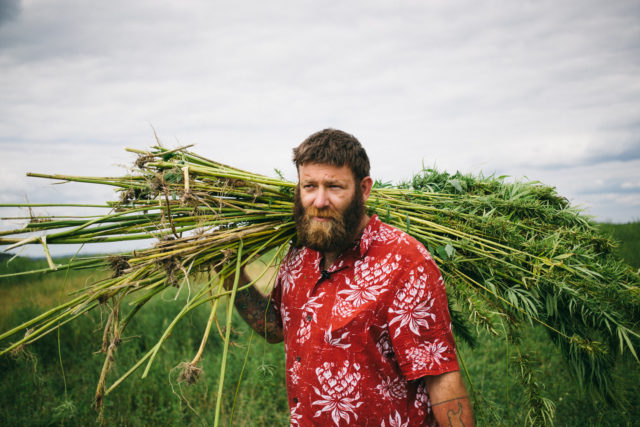
Some days I am hopeful and some days I am not,” says Rob Jungmann, hemp activist and owner of Portland-based hemp clothing company, Jungmaven. “[When I look at the future of hemp it seems Trump] says whatever he needs to make the person in front of him happy — that’s what he has had to do as the kind of business man he is. But that sort of uncertainty is not good for markets. Legislation aside, confidence is really all the economy is based on and it’s such a fragile thing.”
For the last eight years the domestic hemp markets have fluctuated, at times experiencing rapid growth and at others slowing considerably. Similarly, projections looking to the future of the industry differ dramatically.
Studies by researchers in Canada and various U.S. state agencies provide positive outlooks for hemp production, citing rising consumer demand and the potential range of industrial applications for the crop.
“The hemp business community has invested millions of dollars in good faith for the future of the hemp industry,” says John Finamore, executive director of the National Hemp Association. “To date we have seen the value of hemp continue to grow in terms of direct investment, job creation and value creation within a wide range of products. And there seems to be no end as to the potential that the industry has to affect our local, state and national economy.”
Meanwhile, other studies provide a less favorable view of the potential of hemp.
For example, the United States Department of Agriculture projected that U.S. hemp markets are likely to remain “small” and “thin,” citing “uncertainty about long-run demand for hemp products and the potential for oversupply.”
A study out of the University of Wisconsin Madison concluded it is unlikely hemp production will be profitable in the current U.S. portfolio of crops because of underdeveloped processing technologies.
Rebecca Burgess, founder of the nonprofit Fibershed that works to develop regenerative fiber systems, thinks hemp is in a gray area because of a fundamental difference in opposing economic worldviews.
In a typical capitalist system, externalities, like pollution or degradation of natural resources, are not taken into account on balance sheets or profit-and-loss statements because they are difficult to quantify and also because they would introduce an expensive line item.
This presents a problem for hemp advocates whose valuation of hemp is inextricably linked to its reparative and regenerative effects on the environment as a renewable resource.
“I think that’s why it is so challenging to get the investment community to understand the gravitas of this work,” Burgess says. “For some reason, supporting domestic regional textile production doesn’t add up to something worthy of capital. We can chase the lowest common denominator in Bangladesh and Cambodia and drive quality and labor conditions into the gutter, or we can invest into some of our struggling cities in the United States and create jobs here.
“And,” she adds. “A lot of the [production] that I am seeing here is actually price competitive. It’s really a crazy good option.”
But that is a matter of perspective. The 100-percent-hemp T-shirt sold by Jungmaven costs $88 while its hemp-cotton blends start at $36.
At face value this is far from price competitive, especially when compared to a three-pack of Hanes cotton crew neck tees selling for around $20.
But hemp is significantly more expensive than cotton, largely because the hemp supply chain is encumbered with setbacks that Jungmann estimates it would take about $500 billion of investment to overcome. The same is true for cottons that are organically processed or for textiles that are produced with fair-trade labor, although they too underperform hemp in terms of durability.
And so hemp confronts the age-old problem of how to generate enough consumer demand to create supply chain efficiencies that will allow it to be price competitive whether or not an economic model accounts for externalities.
Jungmann and Burgess spend a lot of their time trying to figure out how to deliver such a value proposition for hemp goods to consumers.
“You can tell them that it will be good for the environment, for their health or for their kid’s health, but they won’t buy it,” Jungmann says. “But tell them that they look really, really good? They’ll buy it.”
Jungmann equates generating consumer demand for hemp to magic. The trick is to get the consumer to touch it, he says, to feel it and to look really good in it.
Burgess says that even from the nonprofit angle, this tactic makes sense
“From a high-elevation perspective, humans learn about their surroundings by interacting with them, feeling them, hearing them, seeing them. The commodification of the natural world, specifically with regard to food and textile systems, removed these sensory relationships from our everyday commerce until food systems, supply and value chains were eventually boiled down to a swipe of a credit card and a transactional product acquisition,” she says.
“This insensitivity for the processes and the anonymity of the value chain builds an illusory sense of what is what. So instead of becoming real materialists from a clothing standpoint, we have become more interested in the symbols.”














